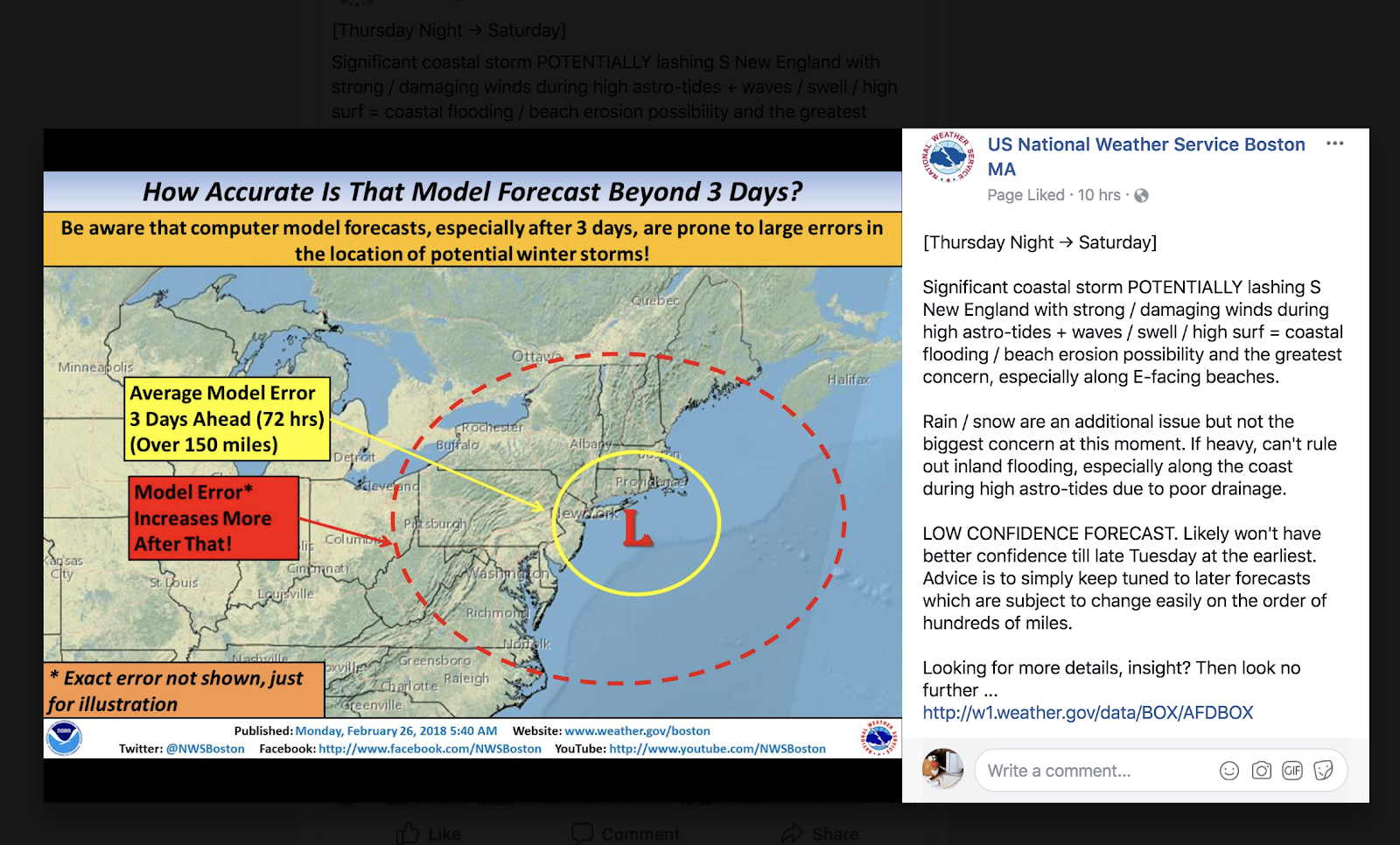When you live in New England in the winter, you pay attention to the forecast. Large snowstorms can make travel near impossible. Heavy snow and blowing winds can cause coastal flooding, power outages, and roof collapses.
The National Weather Service (NWS) exists to “provide weather, water, and climate data, forecasts and warnings for the protection of life and property and enhancement of the national economy.” They’re my favorite source for weather forecasts. And yesterday morning (February 26), they gave me one more reason to appreciate them.
You see, there’s a big storm that may (or may not) be coming later this week. Last week, some forecasters (not from the NWS, it should be noted) were calling for blizzard conditions – seven to eight days from any potential storm! That’s lots of planning time, but is it valid to make plans based on seven-day forecasts?
Yesterday morning’s post from NWS Boston included this graphic and description:
 (https://www.facebook.com/NWSBoston/)
(https://www.facebook.com/NWSBoston/)
Note the words “POTENTIALLY” and “LOW CONFIDENCE FORECAST”. Clicking through to look at the details, you can learn a bit about the model information on which they’re basing their forecast. If you don’t know a lot about meteorology, you can get lost in the abbreviations and details of the models. But the meteorologists have made it easy to understand their shifting confidence by explaining how model runs have shifted as they compile more information. They’ve put a bit of this information into their graphic, illustrating that the model error decreases as more information is known closer to the event.
On a much more novice level, this is what students do when they use High-Adventure Science (HAS) activities. (High-Adventure Science, a National Science Foundation-funded project, produced six NGSS-aligned curricular modules on cutting-edge Earth and environmental science topics. These free, online curricula incorporate real-world data and computational models and are appropriate for middle and high school classrooms.) In HAS activities, students run models and make claims based on data from the model runs. They rate their confidence with their answers and explain the factors that led them to that confidence level.
In our research, we found that when students were asked to write about uncertainty in the context of scientific arguments, they improved their overall argumentation ability. That suggests that teaching about uncertainty in science enables students to better understand real-world science – including weather forecasts.
Will we experience a big snowstorm later this week? I’m confident that the staff at NWS Boston will keep an eye on the model runs, updating me (and the rest of the Boston area) with their forecasts and levels of certainty with the data. In the meantime, check out a High-Adventure Science activity to enhance your students’ scientific thinking skills!